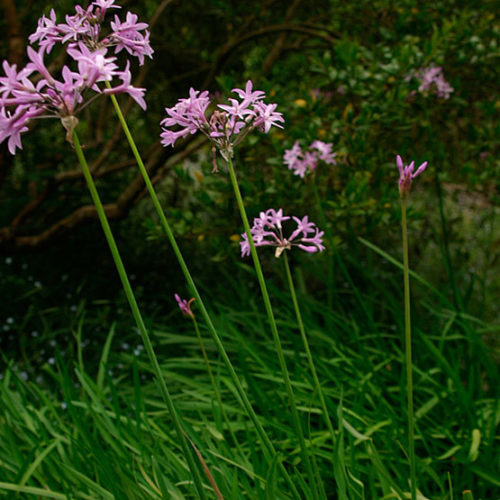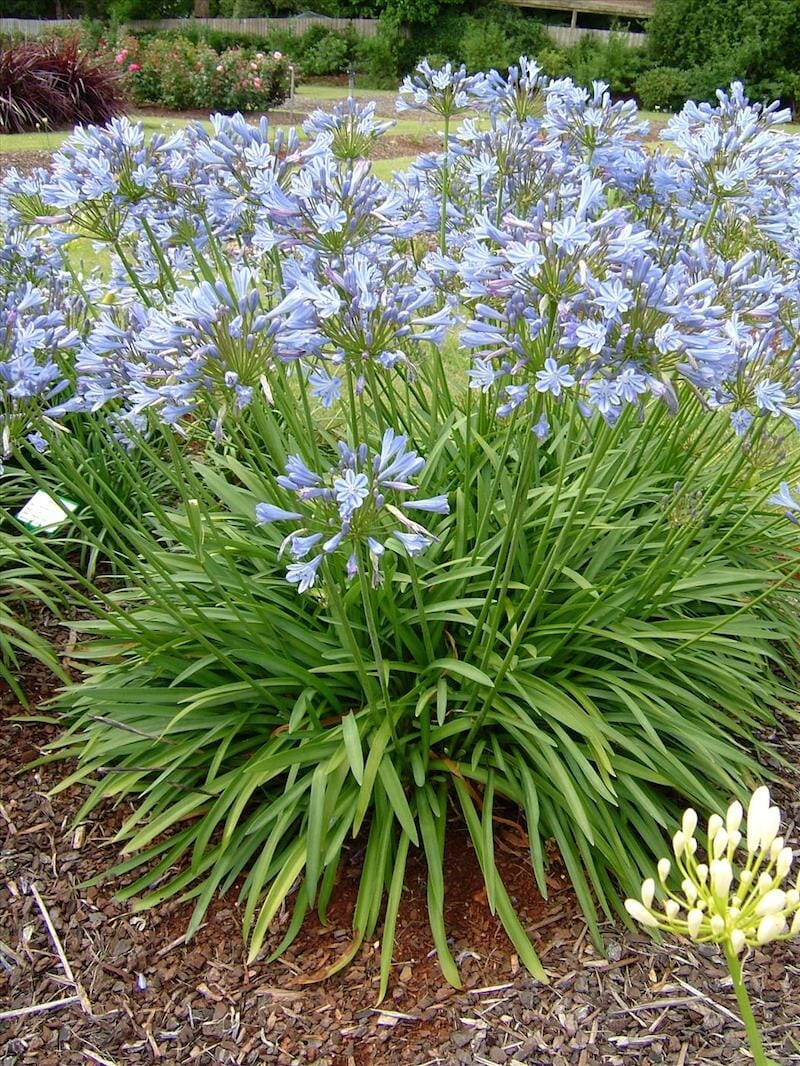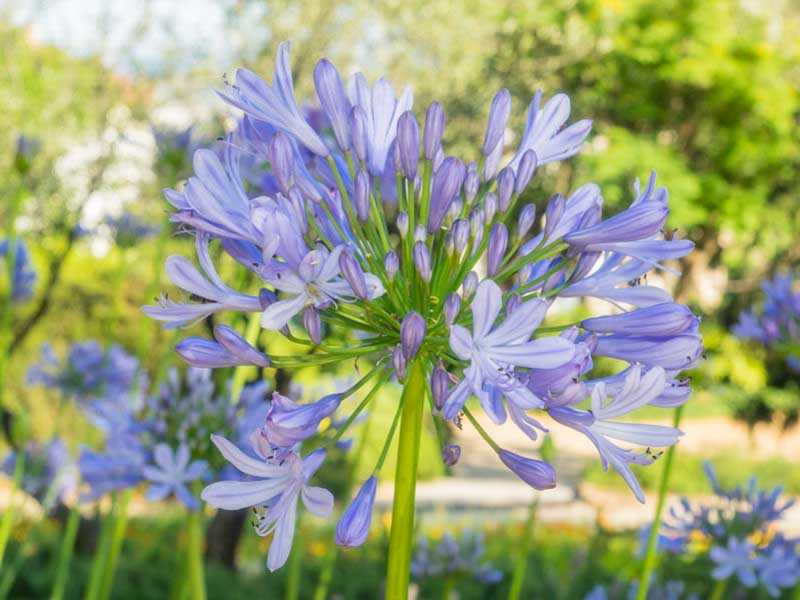Agapanthus Companion Plants: Perfect Pairings for Your Yard
Agapanthus Companion Plants: Perfect Pairings for Your Yard
Blog Article
Mastering the Art of Agapanthus Care: Important Actions for Healthy And Balanced Development and Vivid Blossoms
In the realm of gardening, the growing of agapanthus stands as a satisfying venture for those who look for to support these stylish flowering plants. With their striking blossoms and graceful foliage, agapanthus has actually caught the attention of gardeners worldwide. Nonetheless, attaining ideal development and dynamic blooms requires a nuanced technique that includes various essential steps. From picking the appropriate variety to understanding pruning methods, the journey towards growing thriving agapanthus plants is multifaceted and holds the vital to unlocking the complete potential of these botanical treasures.

Choosing the Right Agapanthus Range

When selecting the ideal Agapanthus variety for your yard, take into consideration variables such as environment suitability, flower color, and development behavior. Agapanthus, frequently referred to as Lily of the Nile or African lily, comes in a variety of shades varying from shades of purple and blue to white. Select a bloom shade that matches your existing yard scheme to create a harmonious landscape. Furthermore, take into consideration the environment in your area to make certain the Agapanthus range you select can prosper in your details conditions. Some ranges are much more forgiving of cold temperatures, while others choose warmer environments. Understanding the development practice of various Agapanthus varieties is vital for proper placement within your yard. Some varieties have a clumping growth behavior, suitable for containers or borders, while others have a more dispersing nature, ideal for ground cover or mass plantings. By very carefully examining these aspects, you can choose the best Agapanthus range to improve the beauty of your yard.
Suitable Growing Problems
Thinking about the ideal environmental needs is vital for effective Agapanthus growing. Agapanthus flourishes in well-draining soil with a somewhat acidic to neutral pH degree. When planting, select a location that gets complete sunlight to partial color. In hotter environments, providing some afternoon shade can stop scorching of the fallen leaves. Agapanthus plants are delicate to cool temperature levels and need to be safeguarded from frost throughout cold weather.
To guarantee healthy growth and dynamic blooms, plant Agapanthus bulbs at a depth of concerning 2-4 inches and area them 8-12 inches apart. Mulching around the base of the plants aids keep wetness and suppresses weed development.
Watering and Feeding Tips
Preserving correct wetness degrees and supplying vital nutrients are crucial elements in the treatment routine for Agapanthus plants. When it comes to sprinkling Agapanthus, it is essential to strike a balance. These plants choose consistently moist dirt however are prone to root rot if overwatered. During the growing period, water deeply as soon as a week, making certain the dirt is well-draining to avoid waterlogging. In hotter environments or throughout periods you could check here of dry spell, more frequent watering may be essential to maintain the dirt evenly moist. Nevertheless, decrease watering in the winter months to protect against waterlogged problems.
Fertilizing Agapanthus is crucial for promoting healthy development and respected flowers. Use a well balanced fertilizer, such as a 10-10-10 formula, in the early spring as brand-new development emerges. By following these watering and feeding pointers, you can ensure your Agapanthus plants flourish and create vivid, resilient flowers.
Trimming Strategies for Agapanthus
Pruning Agapanthus plants at the ideal times and with appropriate strategies is crucial for keeping their health and promoting optimal development and flowering. The suitable time to trim Agapanthus remains in late winter season or early springtime prior to brand-new development emerges. Start by removing any yellowing or dead fallen leaves near the base of the plant. Cut them as close to the ground as feasible without harming the arising shoots.
Deadheading spent blossoms can also reroute link the plant's energy into creating more flowers instead than setting seeds. If you desire to accumulate seeds for breeding, leave some blossoms to dry and mature on the plant.
Remember to utilize tidy, sharp devices to make accurate cuts and decrease the threat of presenting conditions. Agapanthus. Regular pruning will certainly help maintain your Agapanthus looking neat and healthy while making certain an abundant display screen of lovely blooms
Taking Care Of Usual Insects and Diseases
After ensuring appropriate pruning techniques for Agapanthus, it is necessary to resolve common parasites and diseases that can affect the wellness and vigor of these plants. Agapanthus plants are normally hardy yet can still come down with certain concerns. One typical pest that affects Agapanthus is the Agapanthus gall midge. This small, orange fly lays its eggs in the foliage, bring about altered growth and blossom buds that stop working to open up. To fight this parasite, prune and ruin any kind of afflicted plant parts and take into consideration utilizing insecticidal soap.
Another typical problem is fungal fallen leave area, which offers as dark sores on the fallen leaves. To avoid fungal conditions, make sure great air flow around the plants, avoid overhanging watering, and eliminate any type of contaminated leaves immediately. Furthermore, Agapanthus plants can experience origin rot if they are grown in poorly draining pipes soil. To avoid this, plant Agapanthus in well-draining soil and prevent overwatering. By being alert and taking punctual action against diseases and parasites, you can aid your Agapanthus plants thrive and create vibrant blossoms.

Verdict
To conclude, mastering the art of agapanthus treatment entails picking the right range, supplying suitable growing conditions, correct watering and feeding, ideal pruning techniques, and attending to common insects and conditions. By following these crucial actions, you can make sure healthy growth and vibrant flowers for your agapanthus plants. Remember to consistently check and preserve your plants to advertise their overall well-being and longevity.
To make sure healthy and balanced growth and lively blossoms, plant Agapanthus light bulbs at a deepness of about 2-4 inches and discover this space them 8-12 inches apart. By complying with these watering and fertilizing ideas, you can ensure your Agapanthus plants grow and produce vivid, resilient blooms.
One usual pest that affects Agapanthus is the Agapanthus gall midget. Additionally, Agapanthus plants can suffer from root rot if they are grown in badly draining pipes soil. By complying with these essential actions, you can ensure healthy and balanced development and vivid blooms for your agapanthus plants.
Report this page